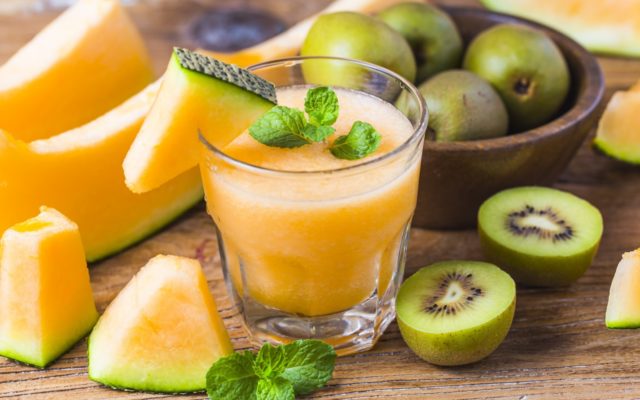The best way to avoid or make up for nutrient deficiencies is to make sure you follow a balanced, nutrient-rich diet. How to make up for the lack of trace elements?
About trace elements
The right approach to nutrition takes into account the individual characteristics of a person and the time of year. This ensures the necessary balance in nutrition. Healthy foods, the most useful for daily use, contain all the necessary vitamins and minerals.
Vitamin deficiency occurs not only because of their lack of diet. The main cause of vitamin deficiency is a problem with the absorption of vitamins. For this reason, those people who eat well and take vitamin supplements also suffer from a lack of vitamins.
So, in order for your body to receive enough trace elements, you first need to adjust the mechanism of digestion and absorption.
This is done in three stages:
review nutrition and make a diet based on an individual dosha constitution;
cure the underlying disease, for example, diabetes or irritable bowel syndrome;
eat fruits and vegetables to improve digestion.
Detoxification remains relevant for most people, after which all problems with the absorption of vitamins are solved.
After the digestive process is restored, the main diseases are cured, or are in remission, you can take vitamin supplements.
(1) – “In addition, researchers indicated the chemical and physiological factors may modify the bioavailability of trace elements in the diet and influence the risk of trace-element-related diseases.”

The role of trace elements in the human body. How to make up for the lack of trace elements?
To understand why the deficiency of trace elements in the body is so dangerous, you need to know what biological role these substances play.
they regulate the speed and quality of metabolism, the synthesis of hormones, vitamins, and a number of enzymes;
they help to maintain the activity of the immune system;
stimulate hematopoiesis;
support the development and growth of bones and soft tissues;
regulate the balance of acid and alkaline ions;
strengthen the functions of the reproductive system.
Inside the cells, trace elements maintain the stability of the membranes, and promote oxygen exchange. If the combination of trace elements is disrupted due to the deficiency of certain molecules, there are failures in metabolic processes. Prolonged and unreadable deficiency of trace elements in the human body can have very serious consequences
Healthy foods
Another way to make up for the lack of vitamins is natural products. These are foods that contain a large amount of nutrients, minerals, vitamins, and antioxidants and are an important component of a truly balanced diet. These are not necessarily rare or exotic fruits: most often products can be found among simple ingredients at home.
Nature gives us products that are best suited for a particular season or climate. For example, root vegetables such as carrots, cabbage, onions, etc., have a high content of minerals and nutrients. This is very important in winter because the body’s need for them increases during this period.
The summer product watermelon has a high water content, which is vital for summer. It is equally important to refrain from refined unnatural food, which disrupts the digestive process and loads the body with toxins. In this case, even the best vitamin supplements or superfoods will be useless, because the body will not be able to properly assimilate them.
How to eliminate the lack of macro- and microelements. How to make up for the lack of trace elements?
Restoring the balance of nutrients in the body is a complex process that involves correcting the entire lifestyle. It is necessary to maintain physical activity, be outdoors more often, give up bad habits, and take care of your health. Nutrition and biologically active additives play a special role in replenishing the deficiency of macro- and microelements.

How to turn nutrition into a powerful tool to support your body?
Healthy eating aims not only to make sure that you are not hungry. It also involves the adjustment of the body’s work as one unified system.
The food here is considered as:
The energy that affects the emotional state and well-being.
Information for our genes, which can be a signal to turn on or off the genes that determine our weaknesses.
Nutrition, but satisfies not only physical but also emotional and mental hunger.
Established communication: with your body (the ability to hear, feel, trust it and get answers from it), with the environment, with nature around, and with seasonal natural cycles.
The main goal of a healthy diet is to nourish the body, taking into account the individual needs of your body and its condition at the moment. Do not limit yourself, but on the contrary give the body everything it needs to optimize its work and feel satiety on the physical, cellular, and mental levels.
What problems does a healthy diet solve? How to make up for the lack of trace elements?
#1. Replenishing the deficiency of trace elements
You can start with the variety of colors and fresh food on the plate.
Did I manage to eat all the colors of the rainbow today?
Which of the 6 main flavors do I lack, and which are too many in my diet?
What is food serving me at the moment and how can I make my relationship with food more harmonious?
What is seasonal now and what exactly do these products give to the body? Learn about products and their properties as a unique personality.
#2. Elimination of toxins and reduction of antinutrients
We need different foods to compensate for certain toxins and antinutrients that are found in most foods, especially plant-based ones. These are phytic acid (phytase), and lectins – substances that serve as protective elements in food: in legumes, cereals, seeds, nuts, all seeds, in some herbs, teas, and coffee.
They are kept in them to protect plants from animals in order to survive in the wild. When these substances enter the body in small amounts, they support the immune system and do not have a negative impact. But if they arrive in large quantities, there are problems with immunity and digestion (intestinal irritation, bloating, increased permeability).
Most often, the body cannot remove them because there is not enough fiber.
Breakfast options. How to make up for the lack of trace elements?
#1. Porridge (oatmeal, millet, corn) of dry cereals 5 tablespoons
add fried sunflower or pumpkin seeds to the porridge with 1 tablespoon
Of sesame, amaranth, hemp, and flax 2 teaspoons each. Not all at once. You can choose 3-4 types of seeds.
Hot drink (any, according to taste preferences).
A couple of loaves with a piece of cheese, feta cheese, or cheese 3.53oz
Different types of cereals and cheeses will also give a variety of breakfasts of the first option.
#2. Avocado 3.53oz
You can add mango 5.29oz to the avocado
Eggs 2 pieces
A hot drink and a couple of peanut butter loaves;
#3. Chia pudding
Coconut milk 1 cup
Chia seeds 3 tablespoons (stir and leave in the refrigerator overnight)
Add any fresh berries 3.53oz
Dried fruits 3 tablespoons
A hot drink and a couple of bread rolls with hummus.
These breakfasts will energize you for the whole day – they are hearty, balanced, and healthy.

Lunch options
#1. Salad of green leaves and any fresh vegetables 10.58oz
You can add an orange, tangerine, or grapefruit to the salad.
Durum wheat pasta or rice 3.53oz
Fish or seafood 5.29oz
#2. Legumes (beans, lentils, chickpeas, mash) 6 tablespoons in dry form.
As a side dish, stewed or baked vegetables 10.58oz,
kino or bulgur 4 tablespoons are well suited here
#3. Tofu 3.53oz, tofu can be sprinkled with fried seeds of any variety.
Buckwheat, rice, or vegetables can be cooked as a side dish. You can also make a salad of raw vegetables – carrots, celery, cucumber, radish, or radish and season it with nut sauce.
#4. As an evening meal, an omelet with vegetables is good.
#5. White meat (chicken, turkey) is combined with a fresh green salad or with cooked vegetables;
#6. Rice or pasta with mushrooms in coconut sauce and green salad.
You can have a snack before or after physical activity, against the background of intense mental work or emotional stress, with dark chocolate, soaked or toasted nuts (1.76oz); dried fruits (3.53oz), separately from everything else – fruits or berries. This is all included in the daily allowance of both essential amino acids and carbohydrates.
If the day is very active, then you can increase the number of products that I recommend for snacks, and the volume of portions during the day.
But if the day turned out to be lazy and sedentary, then the portions do not need to be increased, and be careful with snacks – no one needs extra fat.

Fruit. How to make up for the lack of trace elements?
The most ambiguous carbohydrate is fructose. Its excess leads to the accumulation of excess fat (both subcutaneous and visceral). I will focus on the amount of fructose in fruits, as it is necessary to know, remember, and realize.
A lot of fructose is found in grapes, persimmons, bananas, apples, and pears. That is why they should be eaten about 5.29oz a day in the morning or with various physical and psycho-emotional loads. Then most of the fructose will be consumed to produce the necessary energy.
Much less fructose is found in oranges, tangerines, grapefruits, plums, peaches, apricots, mangoes, and berries. They contain more glucose and sucrose, and even with a “trailer” in the form of vitamins, trace elements, and fiber. Such fruits or berries can be eaten 7.0o oz.
Thus, during the day you can eat 1 fruit from the first group and 1-2 from the second.
For those who really like fruit, you can make a fruit breakfast, but not exceeding the recommended amounts. Ideally, you should not mix a fruit breakfast with anything else.
Fruits plus a protein product (egg or cheese) are perfectly combined. This combination will not give a sharp increase in blood sugar levels.
But porridge and cottage cheese should not be mixed with fruit. It is more useful to add nuts, seeds, or dried fruits to them.
The proportion of fruits and vegetables during the day should be 1 to 4-5. For good digestion and a cheerful state, it is better to observe it. Once a week or even once every 2-3 weeks, you can afford ice cream or cake, but on this day you do not need to eat fruit. If this condition is met, the weight will not increase.

About healthy sweets
Honey
Honey 1-2 teaspoons in the morning is an excellent preventive remedy that will promote healthy longevity.
Biologically active substances of honey, pollen, and other bee products have a healing, regenerating, and rejuvenating effect on our bodies.
Linden, acacia, heather, clover, and chestnut honey have a lower glycemic index (30 to 50%) than flower honey and buckwheat honey (about 70%).
Marmalade and marshmallows
Here we are talking only about natural types of fruits and berries. In addition to the pulp of fruits, pectin, gelatin, and agar-agar are used in production. Pectin reduces the level of bad cholesterol and removes radionuclides and toxins. Gelatin improves the condition of the skin, hair, and nails.
Halva
Of course, natural. It strengthens muscle and bone tissue because, in addition to carbohydrates, it contains many essential amino acids.
Chocolate
Black and bitter chocolate from cocoa beans (85% or more) quickly restores vital energy, improves memory, strengthens the immune system, an excellent antidepressant, and antioxidant, and slows down the aging process. So we eat healthy desserts, but, of course, in moderation.
(1) – National Library of Medicine (US); Trace Elements in Human Nutrition (II) – An Update; Aliasgharpour Mehri; Published online 2020 Jan 3. https://www.ncbi.nlm.nih.gov/pmc/articles/PMC6993532/



